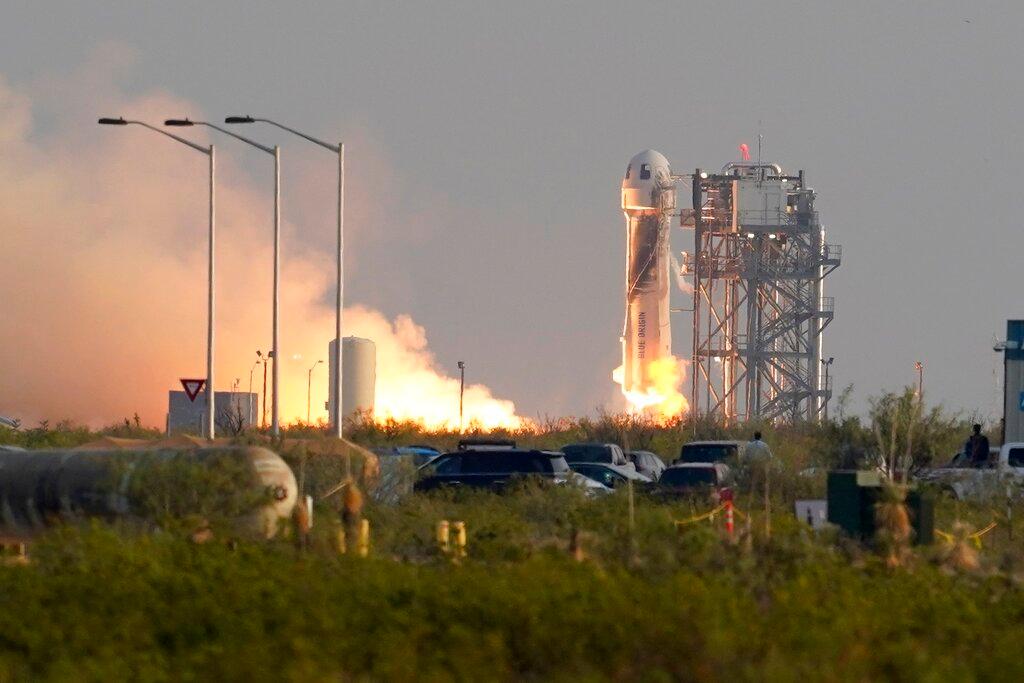There are solid engineering reasons why Bezos’ rocket design caused giggles
As suggestive as the rocket appears, the reasons for the design actually are, engineers say, rocket science.
Blue Origin founder and billionaire Jeff Bezos flew to the edge of space this week in his own rocket. Unfortunately, video footage of the blast off caused outbreaks of the giggles around the world.
The New Shepard rocket had a bulbous passenger capsule sitting atop a tall, narrow booster shaft. The overall effect as it thrust upward into the sky was even more phallic than other rockets.
Social media users were quick to point out the craft’s suggestive design and wonder whether that meant its wealthy owner was compensating for something.
But engineers say New Shepard’s characteristic shape was designed to optimise cabin space for up to six passengers and maximise stability when coming back to Earth and landing upright.
Pedros Llanos, professor of spaceflight operations at Embry-Riddle Aeronautical University said, “The main reason the design looks like this is because Jeff’s first goal is to send people to space, so everything revolves around maximising cabin volume.”
As a future commercial venture carrying paying passengers, this makes sense, says Business Insider.
“Jeff also wanted to have the biggest windows in space so everyone could have an awesome view.” Llanos said. “Everything on Jeff’s rocket is optimised to go suborbital. If it had gone orbital the design would’ve been much different.”
While most spacecraft resemble, in part, male genitalia, New Shepard’s wide mushroom-like capsule – and the skinny girth of the booster underneath – are the driving source of recent innuendo.
Blue Origin engineers tested more than 100 configurations for the capsule shape before settling on one that starts wide at the base. The bulbous capsule also helps reduce drag on the rocket.
Given that the capsule is the first thing to cut through the air as New Shepard ascends skyward, the nose cone is rounded to reduce drag, Llanos said.
The capsule needed to stay stable on descent, too – it detached from the New Shepard booster in the atmosphere and fell for four minutes before deploying parachutes and delivering Bezos and passengers safely to the ground, in a vertical landing. That’s why engineers had to make the bottom so wide.
“The more base it has, the better it’s going to land,” said Jonathan McDowell, an astronomer at the Harvard-Smithsonian Center for Astrophysics. “A capsule shape with a narrower base would have been less stable during reentry.”
Since Bezos’ rocket was only aiming for the Kármán line – an imaginary boundary 62 miles above sea level, where many experts say space begins – its engineers cut down the height of New Shepard’s booster which emphasised the rocket’s phallic profile.
Blue Origin’s next rocket – named New Glenn – looks more like a bullet than a penis to most people.
McDowell said there are other rockets that have capsules wider than their boosters – known as “hammerhead” rockets.
United Launch Alliance’s Atlas V rocket, which will fly Nasa and Boeing’s CST-100 Starliner spacecraft to the space station on July 30, has a hammerhead profile.
Subscribe to our newsletter
To be updated with all the latest news and analyses daily.
